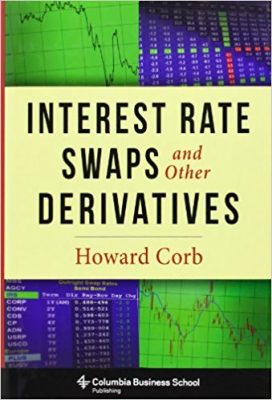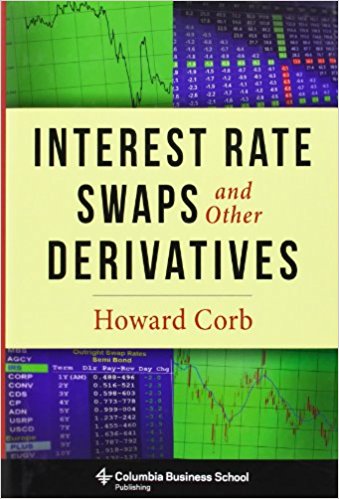 Author: Howard Corb
Author: Howard Corb
Publisher: Columbia University Press – 599 pages
Book Review by: Deekay Daulat
What is a derivative? It is a contract that derives its value from the performance of an underlying entity. This underlying entity can be an asset (such as a bank-owned real estate mortgage or groups of residential or commercial mortgages), index, or interest rate, and is often simply called the “underlying”. The performance refers to payments of interest
Arbitrageurs, hedgers, margin traders, speculators, and other such entities use derivatives to make money or to protect it. Futures contracts and options are some types of derivatives bought and sold by the participants in the derivatives market.
The primary purposes of derivates are to:
- Manage risk
- Express a view on the market
- Pursue market opportunities that are otherwise unavailable using more traditional financial instruments
The most current figures we found on the size of the global derivatives market are from 2007. At the end of June of that year, the derivatives market was valued at about $516 trillion, according to the Bank for International Settlements. This grew a whopping almost tenfold in just three years, from $53 trillion in June 2004.
An interest rate swap is one of many types of derivatives. The author of this book Howard Corb states that the market for interest rate swaps – just as the overall derivatives market – has grown tremendously since the first such swap was executed in 1981. The was when Salomon Brothers international made possible a cross-country swap between IBM and the World Bank, providing substantially advantageous protection from interest-rate swings to both parties.
Swaps, a common type of derivatives, are the first subject discussed in this book, with an introduction to them in the first chapter, and more aspects of these instruments presented and discussed in the following five chapters up to chapter six. Below is an overview of what you will find in this book:
- An Introduction to Swaps
- The Risk Characteristics and the Traditional Uses of Swaps
- The Pricing of Swaps
- Caps and Floors
- Swaptions
- Swaps with Embedded Options
- Structured Notes
- Relative Value and Macro Trades
- More Recent Product Innovations
Appendices
- Refresher in Option Pricing
- A Brief Review of Some Fixed Income Topics
- A Closer Look at Day Count and Payment Conventions in Swaps
- A Quick Look at Mortgages
- The Normal Model
Solutions to Selected Problems
Howard Corb defines a swap as “a contractual agreement between two counterparties that agree to exchange streams of payments over time. If both streams of payments are made in the same currency, then the trade is known as an interest rate swap. If the streams are made in two different currencies, then the swap is referred to as a cross-currency swap.” There are two types of swaps: a coupon swap or fixed-floating swap, with the first being a fixed-rate payment stream, and the second one being a floating-rate stream.
This book provides extensive coverage of interest rate swaps, other derivatives and related subjects, and one does not need a degree in finance to comprehend what is in it. It is a valuable work for use by a number of sectors of the economy including but not limited to
- Borrowers from government agencies at all levels
- Corporations
- Educators
- Institutional Investors
- Traders
A lot of useful reference information is provided in the appendices including examples and math formulas for calculations.
Author:
Howard Corb is an adjunct associate professor in finance and economics at Columbia Business School and a partner at Arel Capital. After receiving his PhD in finance from Stanford University, he began his Wall Street career at J.P. Morgan and later joined Morgan Stanley, where he worked with a variety of international clients to help manage their interest rate risk using derivatives.







